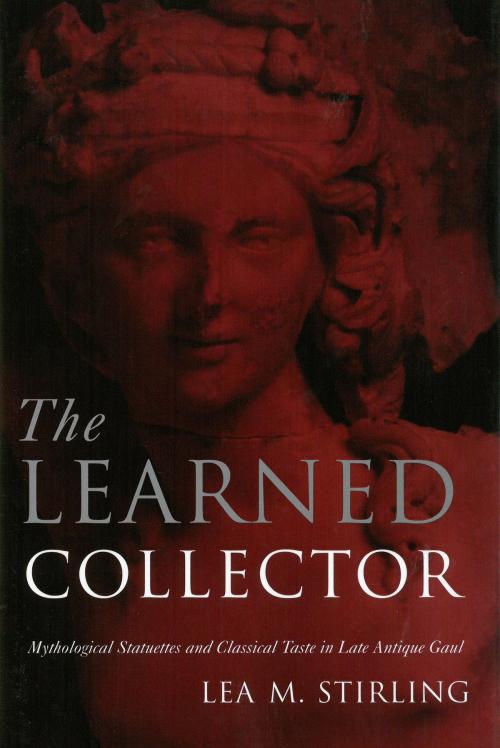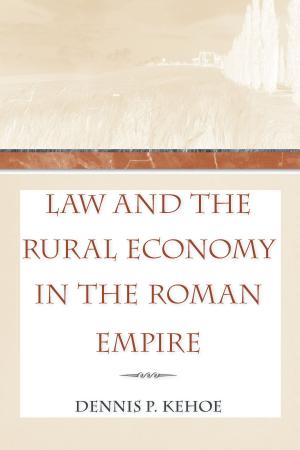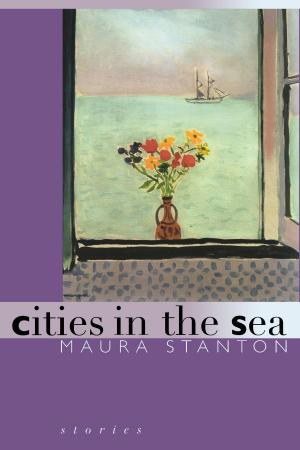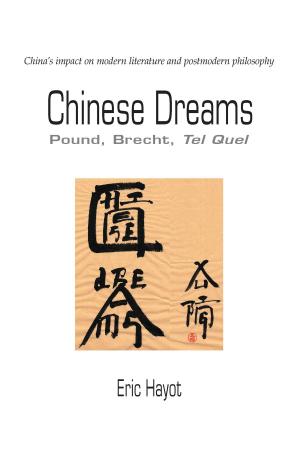The Learned Collector
Mythological Statuettes and Classical Taste in Late Antique Gaul
Nonfiction, Social & Cultural Studies, Social Science, Archaeology, History, Ancient History, Rome| Author: | Lea Stirling | ISBN: | 9780472025343 |
| Publisher: | University of Michigan Press | Publication: | March 11, 2010 |
| Imprint: | University of Michigan Press | Language: | English |
| Author: | Lea Stirling |
| ISBN: | 9780472025343 |
| Publisher: | University of Michigan Press |
| Publication: | March 11, 2010 |
| Imprint: | University of Michigan Press |
| Language: | English |
Inspired by a classical education, wealthy Romans populated the glittering interiors of their villas and homes with marble statuettes of ancestors, emperors, gods, and mythological figures. In The Learned Collector, Lea M. Stirling shows how the literary education received by all aristocrats, pagan and Christian alike, was fundamental in shaping their artistic taste while demonstrating how that taste was considered an important marker of status. Surveying collections across the empire, Stirling examines different ways that sculptural collections expressed not only the wealth but the identity of their aristocratic owners.
The majority of statues in late antique homes were heirlooms and antiques. Mythological statuary, which would be interpreted in varying degrees of complexity, favored themes reflecting aristocratic pastimes such as dining and hunting. The Learned Collector investigates the manufacture of these distinctive statuettes in the later fourth century, the reasons for their popularity, and their modes of display in Gaul and the empire.
Although the destruction of ancient artwork looms large in the common view of late antiquity, statuary of mythological figures continued to be displayed and manufactured into the early fifth century. Stirling surveys the sculptural decor of late antique villas across the empire to reveal the universal and regional trends in the late antique confluence of literary education, mythological references, aristocratic mores, and classicizing taste. Deftly combining art historical, archaeological, and literary evidence, this book will be important to classicists and art historians alike. Stirling's accessible writing style makes this an important work for scholars, students, and anyone with an interest in Roman statues of this era.
Lea M. Stirling is Associate Professor of Classics at the University of Manitoba and holds a Canada Research Council Chair in Roman Archaeology. She co-directs excavations at the ancient city of Leptiminus, Tunisia.
Inspired by a classical education, wealthy Romans populated the glittering interiors of their villas and homes with marble statuettes of ancestors, emperors, gods, and mythological figures. In The Learned Collector, Lea M. Stirling shows how the literary education received by all aristocrats, pagan and Christian alike, was fundamental in shaping their artistic taste while demonstrating how that taste was considered an important marker of status. Surveying collections across the empire, Stirling examines different ways that sculptural collections expressed not only the wealth but the identity of their aristocratic owners.
The majority of statues in late antique homes were heirlooms and antiques. Mythological statuary, which would be interpreted in varying degrees of complexity, favored themes reflecting aristocratic pastimes such as dining and hunting. The Learned Collector investigates the manufacture of these distinctive statuettes in the later fourth century, the reasons for their popularity, and their modes of display in Gaul and the empire.
Although the destruction of ancient artwork looms large in the common view of late antiquity, statuary of mythological figures continued to be displayed and manufactured into the early fifth century. Stirling surveys the sculptural decor of late antique villas across the empire to reveal the universal and regional trends in the late antique confluence of literary education, mythological references, aristocratic mores, and classicizing taste. Deftly combining art historical, archaeological, and literary evidence, this book will be important to classicists and art historians alike. Stirling's accessible writing style makes this an important work for scholars, students, and anyone with an interest in Roman statues of this era.
Lea M. Stirling is Associate Professor of Classics at the University of Manitoba and holds a Canada Research Council Chair in Roman Archaeology. She co-directs excavations at the ancient city of Leptiminus, Tunisia.















